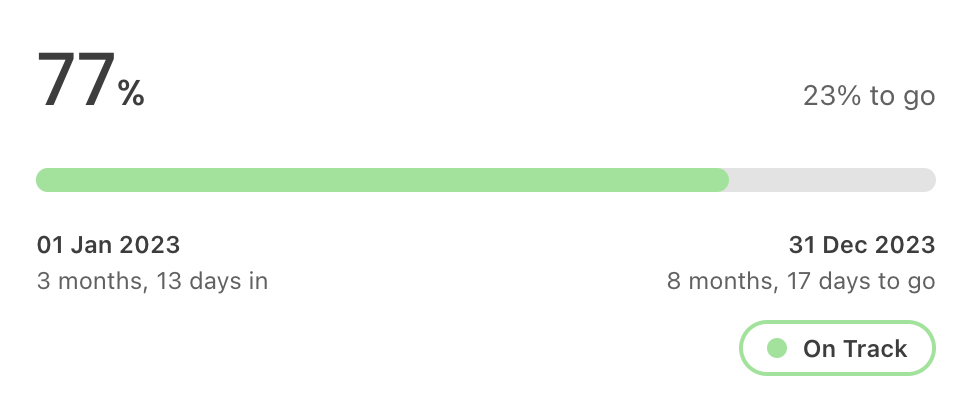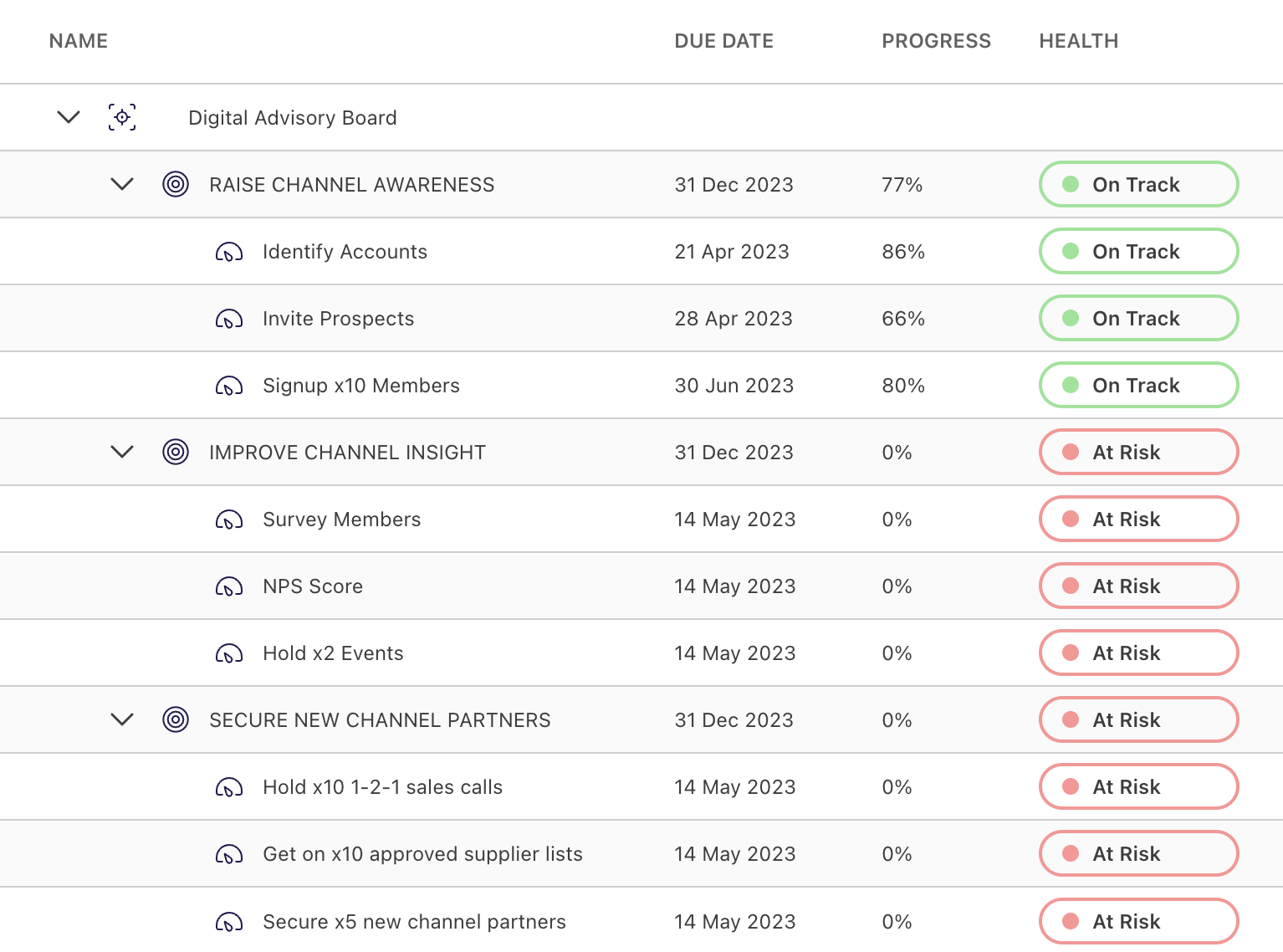What Are OKRs?: A Step By Step Guide To Objectives And Key Results
Today, we will look at OKRs, what they mean and how you can use them to define, build and grow your business in the future.
In this article, we are going to cover the origins of OKRs, and how major companies use them to track accomplishments and the effectiveness of their marketing and growth strategies.
What Is An OKR Exactly?
The term “OKR” stands for “Objectives and Key Results”. They are essentially a goal-setting and leadership tool. If you want to communicate what you want to accomplish across an organization, with key milestones that are clear and concise, OKRs are your best friend.

Who “Invented” OKRs?
The roots of the OKR framework are deeply embedded in corporate America. The term OKR was first coined by Andrew Grove of Intel. One of the top salespeople, a guy called John Doerr, recalls Andrew using the term way back in 1975 at a training seminar.
In 1993, Grove wrote explicitly about OKRs in a book he published called High Output Management.
In 1999, Doerr was working for venture capital firm Kleiner Perkins and introduced the idea of OKRs to Google, among other companies. The framework rapidly took off and became central to Google’s growth and management structure. This ensures that everyone at Google across the board is walking working towards the same aim.
Doerr also published a book in 2017 called Measure What Matters, a book that breaks down the OKR structure that he first heard all those years ago at Intel.
OKR frameworks are now widespread and many companies, not just in corporate America, use the framework to measure growth and success.
How To Create An OKR
The basic recipe for an OKR is:
A clearly defined objective and three to five key results which we use to measure if we achieve that objective.
The criteria used to track the achievement of that goal should not only be concrete, clearly defined and significant, it should also be aspirational.
This means that the entire organization is pulling toward the same objectives. These objectives can also be supported by initiatives which are the plans and activities that help move forward the results, and ultimately achieve said objective.
Results should be measurable with some sort of numerical value. Either a scale of 0 to 10 or 0% to 100%.
These numerical values can be used by decision makers to figure out whether those involved in the objectives are working towards the key results or are running off track. The overarching idea is there should be no gray area.
Is There A Formula For A Perfect OKR?
Typically, they are written with an objective at the top of the page, followed by three to five supporting key results. They can also be written as a statement, for example:
“We will achieve 85% service renewal by Q4”
That is a clear, concise objective.
Now come the key results. These are how we monitor the progress of the objective being met. These are specific and time-bound. No matter if it is a one-person start-up or a 20,000 employee corporate business, these key results keep everyone pushing toward the same outcome.
Think of it like this:
Objectives are a marathon. Key results are a sprint.

The sub feature of key results are initiatives. These are the individual tasks that make up the key results.
Example:
Objective: I will generate $10,000 of new signups for the business per month.
Key Results:
100 new warm client leads per week.
15 discovery calls per week.
Close one new client per week for the $2500/m retainer package.
Initiatives:
Cold-email 30 new clients per day and pitch them.
Set up discovery calls with a minimum of 10% of the potential clients.
Things To Remember When Setting OKRs
1: Simplicity Over Complexity
Focus on goals and objectives that are achievable. Make a point of showing every employee where they fit into the overall objective and key result strategy. Many employees try to achieve multiple objectives and end up failing. This is usually because they are simply running out of gas before the objective that’s most important to them has been reached. This is usually the result of spreading themselves too thin and trying to tackle multiple initiatives.
2: Be Specific
Be very specific when you set objectives. It’s a good idea to get a sheet of paper and a pen and really brainstorm the ways you can reach the result. For every key result that you feel you must achieve, be very specific on the initiatives required to achieve that key result. Clear concise initiatives end in logical results.
3: Create Relatable Objectives
The biggest issue with company wide objectives is that individual employees cannot see the big picture. They don’t quite understand how their individual efforts are going to manifest the result. The key here is to cascade objectives from a top-down level. Start with the organizational level, move down to department level, and eventually finish with individual level key results. When the employees see their individual key result culminates in the final objective, you’ll have an easier time getting them on board.
4: Measure, Measure And Measure Again
The absolute cornerstone of achievable objectives are measurable key results. You can’t count something you aren’t measuring, right?
It really doesn’t matter what numerical units you use; it could be percentages, it could be dollar values, it could be number of clients. It could be the number of blog posts that matters. For instance, if you owned a SaaS business and your objective was to bring 100 new clients into the business every month for the next 12 months, that is a definite objective. If you get 98 clients, you failed, 102 clients and you’ve done better than the objective you set.
5: Celebrate Small Wins
It can be tempting, if you have a long-term objective, to wait until an objective has been met to celebrate whether or not you succeeded. This is a mistake; you should celebrate even small wins because the incremental wins will motivate people and foster a sense of encouragement and support within the team. Even if the team is one person coding software in a basement. Treating yourself to a Twinkie every time you get a key result will definitely keep the flame inside you burning when you really want to give up.
6: Split Key Results
When key results are too broad, it's hard to maintain focus and people lose track of where they are inside that key result structure. By splitting key results into smaller initiatives, you ensure that even the smallest cog in that machine is going to be turning the correct way.

How Many OKRs Should I Set?
We recommend the average size company set three or four quarterly OKRs. With three to five key results under the initial objective. Of course, you could set ten OKRs per quarter with three to five key results underneath that objective. There’s no rule of thumb, but setting anything over five objectives per quarter runs the risk have people losing track of the key results and ultimately the objective not being met.
Example:
Objective/Company:
Increase revenue by 10% in financial year 2023
Key Results:
Monthly revenue increased to $160,000.
eCOMM sales increased by 20% by the end of the 4th quarter.
Three new niche websites are launched and optimized per quarter.
As companywide OKRs, this makes sense. Now let’s see how it would make sense to a marketing department.
Objective/Marketing Team:
Build brand awareness by beating last year’s metrics by 15%.
Key Results/Marketing:
Build our Instagram account by 50k followers.
Grow website traffic by 20%.
Build email newsletters across all sites by 10%.
As you can see, setting OKRs is really like goal setting but it guarantees an outcome. Either you reach the objective, and you can chalk that one up, or you fail to reach the objective.
Even failure is okay at this point because it allows your business to re-evaluate the situation and take another crack at it. The key ingredient is the OKR itself. If you’re constantly failing to meet objectives and key results are few and far between, it might be a sign that something deeper, more intrinsic is wrong.
The Wrong Type Of Goals
The objectives might be reach goals instead of objectives. If you’ve noticed a pattern here, it's that objectives should be achievable. Many companies set reach goals instead, because they feel they aren’t doing enough. Reach goals are defined as outside of the usual framework of the business, to a degree that is uncomfortable for most people involved. If a car dealership sells 10 cars per day, a reach goal would be 30 cars per day, an OKR objective would be 15 cars per day.
This isn’t about lowering expectations, it’s about meeting objectives so that further objectives are achievable. It’s super easy to get demoralized if you’ve been trying to shift 30 cars a day for years and had zero success.
When it really comes down to it, OKRs are stepping stones. The goal is to hop from one to the other until you reach the other side of the river. Being able to do this, and having a trusted partner onboard to guide you through the process, is one of the most important steps a business can take.
As somebody once said, if it’s good enough for Google...
You May Also Like
These Related Stories
